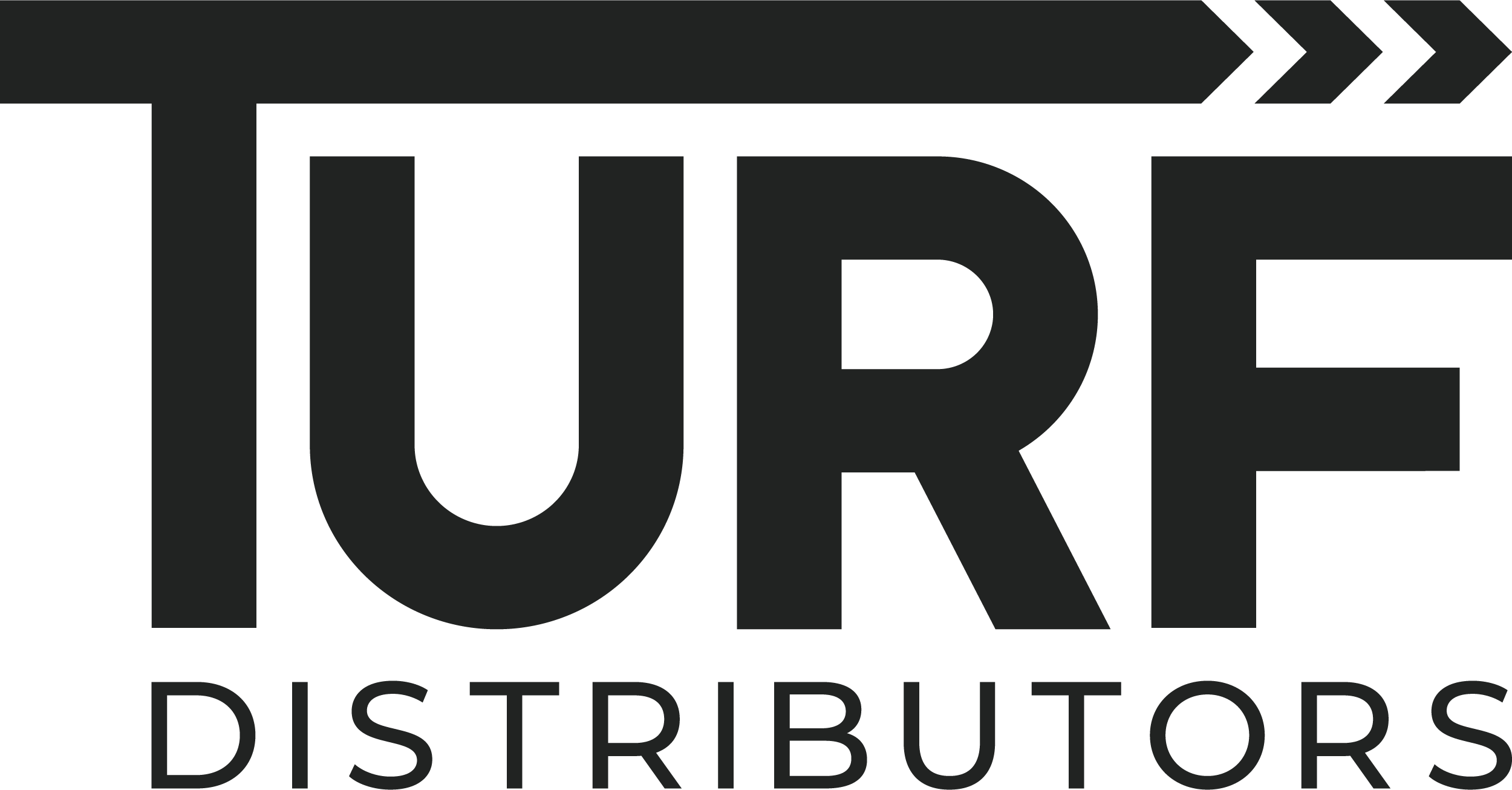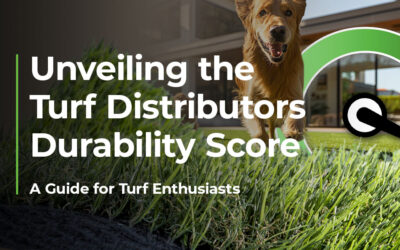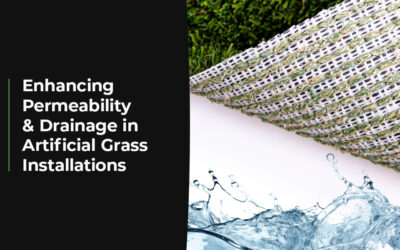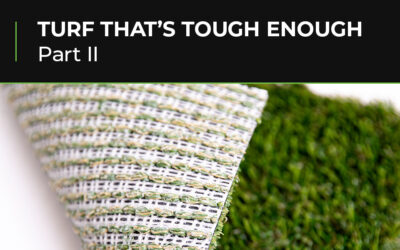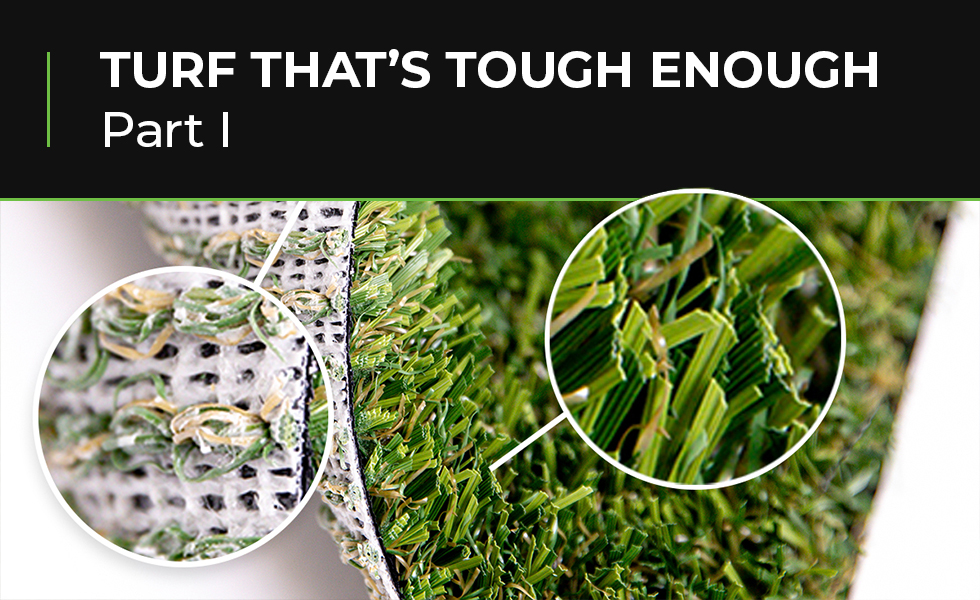
Tuft Bind and Blade Resilience in Artificial Grass
Artificial grass has become the go-to choice for landscaping, sports fields, and recreational areas due to its low maintenance and aesthetic appeal. But have you ever wondered about the science behind that lush green appearance? It’s the technical dance between tuft bind and blade strength that ensures longevity and performance. Let’s dive into the crucial factors that contribute to the durability of artificial grass.
Tuft Bind:
The Glue that Keeps It Together
Think of tuft bind as the invisible adhesive holding the artificial grass fibers together. This measure defines the force required to pull individual yarns from the backing material. A higher tuft bind strength signifies a more robust and long-lasting artificial turf.
The strength of tuft bind is influenced by factors such as the quality of the backing material, the construction of the turf, and the type of yarn used. Leading artificial grass manufacturers invest in cutting-edge technologies and materials to enhance tuft bind, ensuring that the fibers stay firmly anchored despite the challenges posed by weather, foot traffic, and other environmental stressors.
Blade Strength:
Standing Strong Against the Elements
Blade strength is another critical aspect directly impacting the performance and appearance of artificial grass. Blades, the individual strands forming the grass surface, need to withstand pressure, bending, and overall wear and tear from regular use.
Manufacturers employ a variety of materials like polyethylene, polypropylene, or nylon to create resilient artificial grass blades. These materials are chosen for their durability, UV resistance, and the ability to bounce back to their original shape, maintaining the lush and vibrant look of the turf.
Achieving the Perfect Balance:
Ensuring Longevity
The interplay between tuft bind and blade strength is crucial for achieving the perfect balance in artificial grass. A strong tuft bind secures the fibers to the backing, preventing them from loosening or pulling out. Meanwhile, robust blade strength ensures that the grass maintains its structural integrity, even in high-traffic areas.
Investing in high-quality artificial grass excelling in both tuft bind and blade strength pays off in the long run. A durable turf not only retains its aesthetic appeal but also stands up to the challenges posed by the elements and frequent use.
In Conclusion:
Beyond Surface Beauty
When considering artificial grass for your landscaping or recreational needs, look beyond the surface beauty. Tuft bind and blade strength are the unsung heroes contributing to the resilience and longevity of artificial grass, ensuring that your outdoor spaces remain lush and vibrant for years to come.
Is Your Turf Tough Enough for Pets, Play Areas, and High-Traffic Zones?
Let’s delve deeper into why tuft bind and blade strength are crucial elements, especially in artificial grass applications for pet use, play areas, and high-traffic zones.
1. Pet-Friendly Landscaping:
Pets can be tough on outdoor spaces, running, digging, and taking occasional bathroom breaks. In pet-friendly artificial grass, tuft bind is vital to prevent fibers from loosening or pulling out during the playful antics of our four-legged friends. A strong tuft bind ensures that the turf remains intact, even under the constant movement, paws, and occasional digging associated with pets.
Additionally, robust blade strength is essential for withstanding the wear caused by pet traffic. Durable fibers made from materials like polyethylene resist damage, helping maintain the aesthetics of the artificial grass. UV resistance is also crucial to prevent fading and discoloration, ensuring a vibrant and pet-friendly outdoor space.
2. Play Areas for Children:
Play areas are vibrant with activity, where children run, jump, and engage in various recreational activities. Artificial grass with high tuft bind strength ensures that the fibers stay firmly in place, minimizing the risk of tripping or injury during play. This stability is particularly crucial in playgrounds where safety is a top priority.
Similarly, strong blade resilience is essential for handling the constant pressure and friction from activities like sliding and crawling. Quality synthetic grass with durable blades provides a soft and comfortable surface for children to play on while withstanding the rigors of active play.
3. High-Traffic Zones:
High-traffic areas, such as commercial spaces, sports fields, or community parks, demand artificial grass with superior tuft bind and blade strength. These areas experience a constant flow of foot traffic, events, and recreational activities.
A high tuft bind ensures that the artificial grass remains securely anchored to the backing, preventing matting or fraying even with frequent use. Additionally, resilient blade strength helps the turf withstand the repetitive stress and pressure from people walking or playing on the surface. This durability is essential for maintaining an attractive and functional landscape in areas that experience heavy use.
Conclusion:
In applications where artificial grass is subjected to the unique demands of pets, playful children, or high-traffic use, the importance of tuft bind and blade strength cannot be overstated. These elements work in harmony to create a robust and enduring surface that not only withstands the challenges of daily use but also provides a safe, comfortable, and aesthetically pleasing environment for both humans and their furry friends. Investing in quality artificial grass designed for these specific needs ensures a durable and long-lasting outdoor space for enjoyment and recreation.
Unveiling the Secrets of Artificial Turf Durability: A Guide for Turf Enthusiasts
Welcome, turf enthusiasts! If you're delving into the world of artificial grass, you've probably encountered terms...
Enhancing Permeability and Drainage in Artificial Grass Installations
Artificial grass has become a popular landscaping solution, offering a low-maintenance and aesthetically pleasing...
Turf That’s Tough Enough Part 2: Enhancing Artificial Grass Strength
Enhancing Artificial Grass Strength: Beyond Tuft Bind and Blade Resilience In the intricate world of artificial grass...
